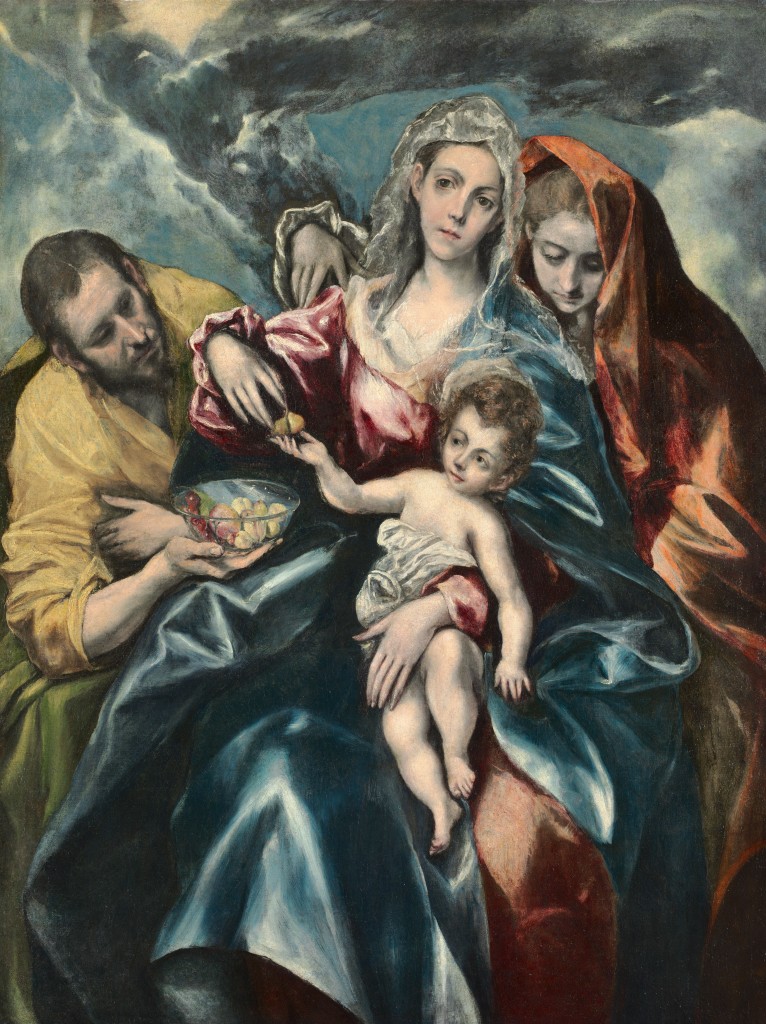On Saturday, the Portland Art Museum in Oregon opened a new “Masterworks” exhibition, of El Greco’s Holy Family With Saint Mary Magdalen, which is being lent by the Cleveland Museum of Art. It’s the fifth show in this series, and I love the idea of borrowing and focusing attention on one artwork. The El Greco “Masterworks” was preceded by Raphael’s La Velata, Thomas Moran’s Shoshone Falls, Titian’s La Bella and Francis Bacon’s recording-breaking triptych, Three Studies of Lucian Freud.
I think I’ve written about all of them here, for one reason or another.
 This time, I decided to ask Brian Ferriso, Portland’s director about the series. I’ll give you his answers verbatim.
This time, I decided to ask Brian Ferriso, Portland’s director about the series. I’ll give you his answers verbatim.
What are your overarching thoughts about this series?
I continue to be excited about the opportunities that these projects present. It allows us to focus on why art museums exist—the power and centrality of the object—and more specifically to explore the many facets of a celebrated picture.
Are they easy to arrange, and must you usually lend something in return?
Easy is relative. It requires negotiations, relationships and clarity of purpose, among other things. They always require some effort and planning and each loan requires a different level of negotiation and/or discussions. The El Greco is an exchange and we negotiated it to coincide with the 400th anniversary of this death and of the holidays. We made sure the picture is exhibited through the December holidays and Easter.
Do they draw a lot of people, or just art-lovers, or just people who’d be in the museum anyway?
They draw a wonderful mix. We have seen people come specifically for the Masterworks or they have run into it when they are visiting other exhibits. Additionally, we program them, allowing educational programs to expand on the content. I continue to love these projects because we can place them in various locations of the museum and in doing so amplify our collection. Titian, Raphael and El Greco increase the attention and dialogue around our Renaissance collections. The Moran brought attention to our Moran, Bierstadt, Weirs and Hassams, among others. And the Bacon was an introduction to our entire modern and contemporary wing.
The El Greco has been special, like some of the others, because we have exhibited it during the holidays, a time when many of our visitors are looking for that extra special reason to come to the museum and/or when I am at many holiday-related events at which our community asks. “What’s new?†and with the Masterworks I always have an answer!
Do you have a schedule of these or are they all targets of opportunity?Â
Both. I have a few targets and we are in discussions for future loans. Also, I (we) are opportunistic. I would categorize the Raphael, Moran and El Greco as targeted and the Bacon and Titian as more opportunistic. There are nuances to all of these, so ultimately it is not as straightforward as I have classified. Ideally, my goal is to have one every 12 to 18 months in order to maintain the momentum.
They are always treated as “special†with a commensurate level of gallery presentation, enhanced interpretation, marketing, banners and press releases, and opportunities for press and donors—viewing the crate being opened, lectures and special interviews with the curator and/or director, etc.
Any advice for other museums that want to do this?
As Oregon-based Nike would say, “JUST DO IT!â€
***
I do agree, as you’ve probably guessed. Ferriso wrote an article on these exhibition that was published in 2013, here’s the link to “The Power of the Masterwork.”
Portland is not alone in single-work exhibitions. The Detroit Institute of Art is currently featuring Water Lilly Pond, Green Harmony, by Monet, on loan from the Musee d’Orsay in its “Guest of Honor” program, to name just one.
Photo Credit: Courtesy of the Cleveland Museum of Art via the Portland Art Museum
